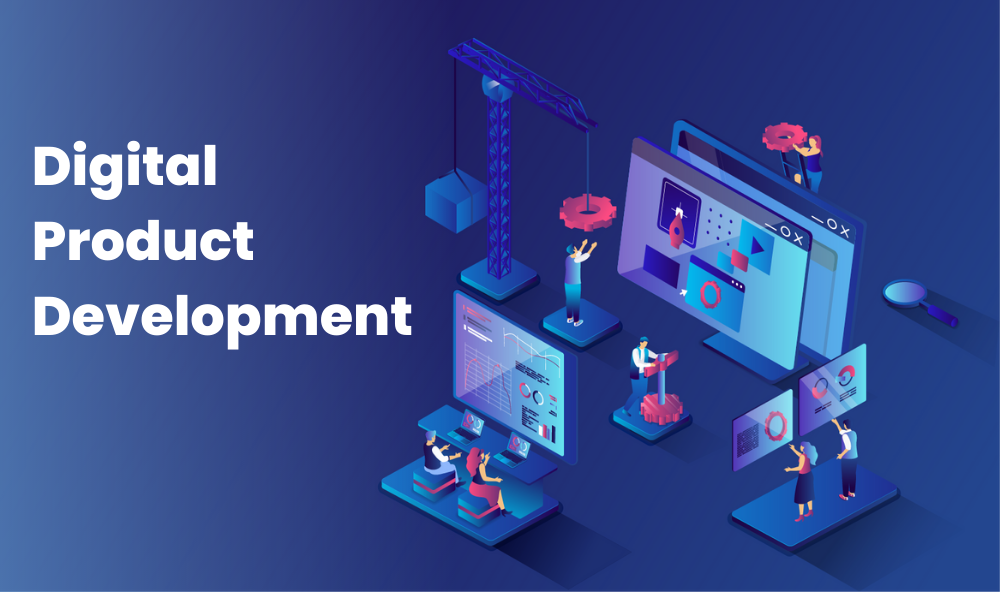In recent decades, technological advancements have faced a hike due to the escalating demand for digital products and services. The measure of success in today’s era is the success of digital products. I must say the landscape for digital product development seems quite promising. A strategic and well-informed approach gives birth to innovative digital products, offering amazing experiences. Digital product development, or DPD, discusses the product development process, which involves extensive ideation, design, implementation, monitoring, and improvement. The process or DPD entails software applications, online platforms, and services. It wouldn’t be wrong to credit it as a cyclical process that involves several stages, hacks, and practices to deliver a product that is exclusively customer-oriented. In this extensive blog post, we’ll delve deeper into understanding DPD and explore expert tips and strategies to navigate the dynamic realm successfully, ensuring your digital products not only meet but exceed user expectations.
Strategies for Digital Product Development
1. Vivid and Clear Objectives
To lay a solid foundation for your digital product, one must have a vivid understanding of the objects. This requires defining clear and measurable objectives. Understand the problem your product aims to solve and establish key performance indicators (KPIs) that align with your business goals. This clarity provides your team with a roadmap for development, fostering a shared vision.
2. User-Centric Design
If your product is not able to serve the target customer, it is not enough. Digital product development should focus on offering user-focused design and experience. The heart of any successful digital product development lies in the user experience (UX) of the digital product. Conduct in-depth user research to gain insights into your target audience’s behavior, preferences, and pain points. A user-centric design approach ensures that your product is not only functional but also resonates with the intended users, enhancing its overall appeal.
3. Agile Methodology
When it comes to successful digital product development, the ability to adapt and evolve quickly is paramount. Embrace the Agile methodology by breaking down the development process into manageable iterations. This iterative approach enables your team to respond promptly to changing requirements that foster a culture of flexibility and continuous improvement.
4. Cross-Functional Collaboration
Foster a collaborative environment where cross-functional teams work seamlessly toward a common goal. Effective communication between developers, designers, marketers, and other stakeholders ensures that diverse perspectives contribute to the product’s success. A collaborative culture promotes innovation and ensures a holistic approach to product development.
5. Prototyping and Testing
Before committing to the final product, invest in prototyping to visualize ideas and gather early feedback. Digital Product development services is incomplete without this crucial step or trick. User testing is a critical component of this phase as this allows you to identify potential issues and refine the product iteratively. This approach not only saves time and resources but also enhances the end product’s quality.
6. Security Integration
The era of the internet, intranet, and artificial intelligence has swamped companies’ benefits, but the risk of data breaches is always there. Security should be integral to the digital product development process. Embed robust security measures into your product’s architecture to safeguard user data. Prioritize data protection to build trust among users and mitigate potential risks.
7. Continuous Integration and Deployment (CI/CD)
Streamline your development process by implementing Continuous Integration and Deployment (CI/CD) pipelines. Automation of testing and deployment processes reduces errors and accelerates the release cycle. This efficiency ensures a more reliable and consistent delivery of high-quality products.
8. Data-Driven Decision Making
Data-led decisions and informed choices always pay off in your favor. Leverage the power of data analytics to make informed decisions throughout the development lifecycle. Monitor user behavior, gather insights, and use data to refine and enhance your product continuously. Data-driven decision-making ensures that your product remains aligned with user expectations and market trends.
9. Scalability and Future-Proofing
Design your product with scalability and future growth in mind. Anticipate technological advancements and market shifts to ensure your product remains relevant in the long term. Future-proofing your product is essential for staying ahead in the ever-changing digital landscape.
10. Feedback Loops and Iteration
Establishing continuous feedback loops with users and stakeholders is vital for ongoing improvement. Regularly iterate based on received feedback to enhance features, fix issues, and align the product with evolving market demands. Embracing a mindset for iteration and continuous learning reaps perfection in the digital product development process and it keeps your digital product at the forefront of innovation.
Conclusion
Having said all that, one must always remember that Digital Product Development is a dynamic and multifaceted journey that requires not only tech knowledge but a combination of innovation, collaboration, and adaptability. By incorporating these expert tips and strategies, businesses can not only navigate the complexities of DPD successfully but also position their digital products as industry leaders. Stay ahead of the curve by delivering exceptional user experiences through digital product development.

